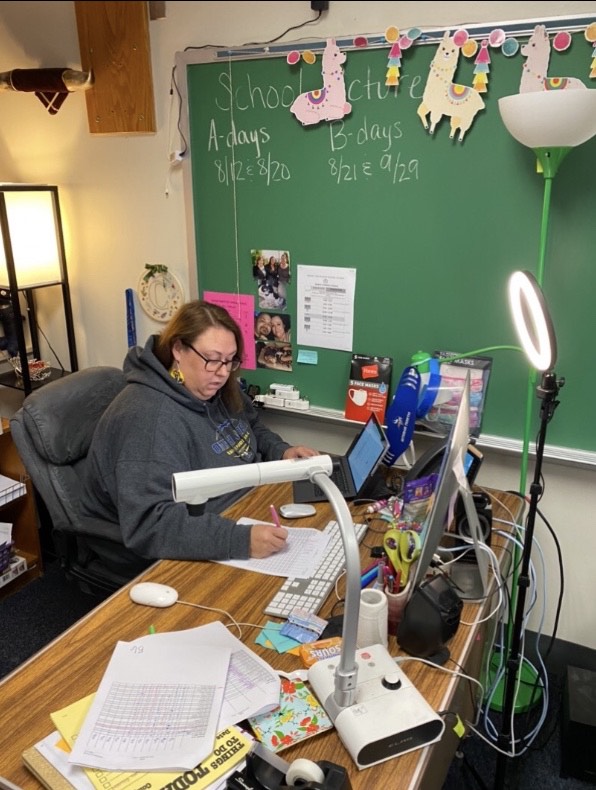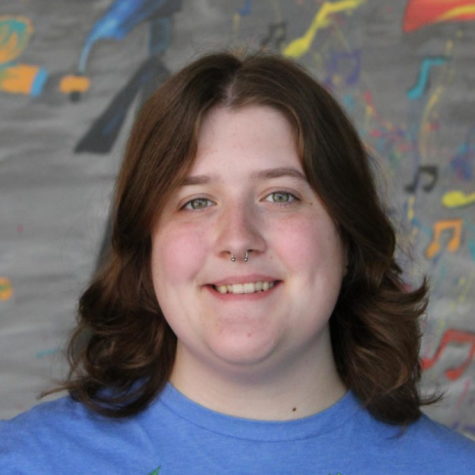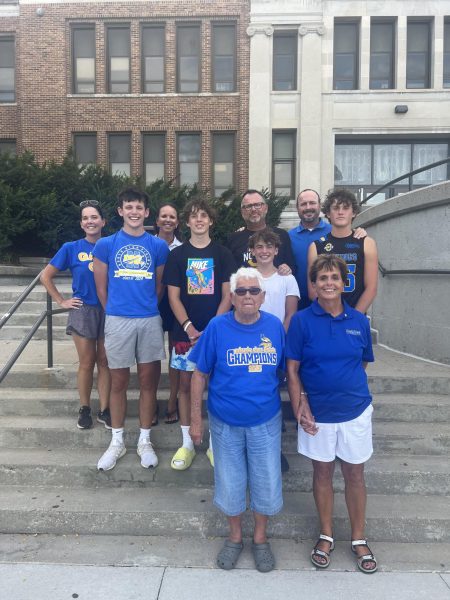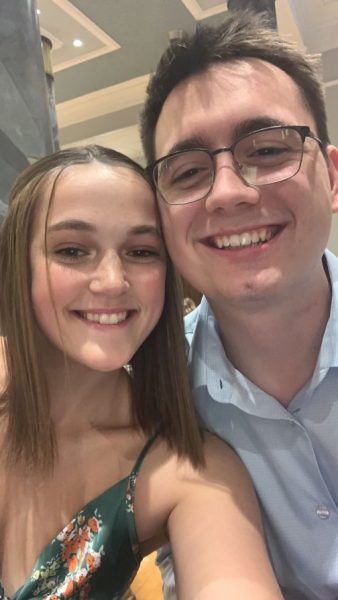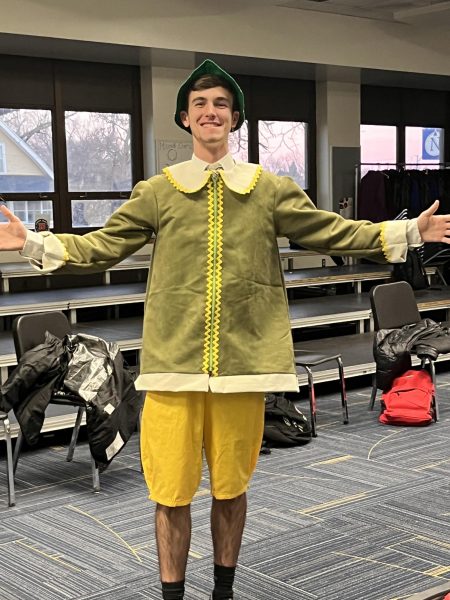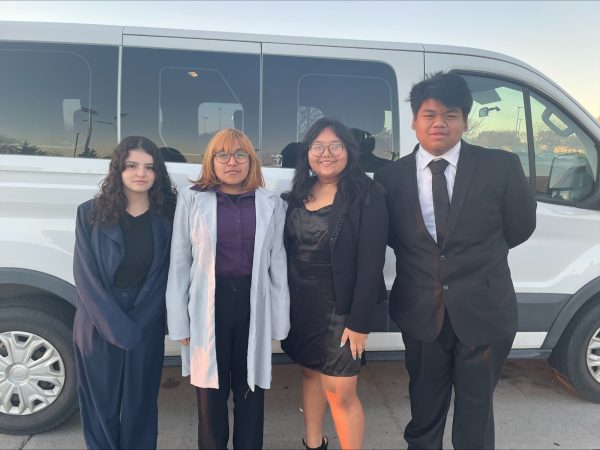The remote learning adjustment
November 19, 2020
As the first day of school grew closer and closer teachers, students and parents were trying to imagine what going back to school amid a pandemic would look like. Students and teachers were preparing for the 3-2 plan, a model that would have half of OPS students attend school in person for two or three days and then tune into online classes for the rest of the week.
Suddenly everyone felt as if a rug had been pulled from right underneath them when it was announced that the entire first quarter of school would be online.
Naturally, students had mixed reactions over the new plan that had been set forth. Many students were thrilled to be able to return to school after their long absence, this in turn made the installment of online learning all the more frustrating. Garrett Potts, 9, was left upset when remote learning was put into place.
“I find it hard to believe that OPS can’t go back when Millard and every other school district in Nebraska is back,” said Potts.
Others were a bit more relieved knowing that they could stay home and learn, COVID-19 still being a prominent fear to many. Veronica Sargbah, 10, was eager to return to the school building but, she also had fears about possibly spreading the virus to her loved ones.
“If you don’t have enough precaution you could be taking a virus back home to your family,” said Sargbah.
Teachers had their own opinions as well. The educators of OPS got training on how to instruct in both the remote learning setting and the 3-2 model. This allowed teachers to have a bit more insight on how the school year would look from both perspectives.
Andrew Zimmer, a history and economics teacher, reflected on how excited he felt when the online schooling plans were announced. When reviewing the 3-2 model he felt that his curriculum would be very slow paced. After teaching an online summer school course, Zimmer got a feel for what a remote school year could hold.
Some teachers were also relieved to be moving online due to their fears regarding COVID-19. Cheryl Connors, a freshman English teacher, constantly worried about contracting the virus until remote learning was announced.
“Between being immune compromised and diabetic I was very concerned that I would get it,” stated Connors.
Whether or not students and teachers were happy about moving online, there are still many struggles that must be faced collectively. Technology malfunctions, poor communication, and lack of student participation are just a few of the problems that have arisen in the new online learning format.
Numerous students are enrolled in classes that are normally very hands on, but because students no longer have all the resources that they once did, there has been a disconnect between students and curriculum.
Both Potts and Sargbah said that engineering has become a more difficult course now that they do not have access to certain computer programs.
Plenty of students also feel that lessons simply aren’t getting through to them while learning online. Staring at a screen certainly isn’t the same as being in an actual classroom.
Sargbah finds herself to be a very visual learner, hand gestures and facial expressions are just a few things that help her to stay engaged during lessons. Sargbah frequently videotapes lessons so she can reference them while doing homework in case she misses anything important that was said.
“I just record lessons at this point, like I have hour full lessons in my phone,” stated Sargbah.
Teachers are experiencing problems of their own, mostly regarding technology. Connors claims that her biggest struggle is helping her students navigate the online classroom. She and her students see the online classroom from different perspectives seeing that she teaches from a computer and her students tune in from iPads.
Some teachers often feel as if they’re talking to themselves while their students keep their cameras and microphones off in order to better their internet connection. With limited student participation it comes as no surprise that teachers feel a bit lonely sometimes.
“Working on figuring out a way to get more student involvement is a goal of mine,” said Zimmer.
It is also commonly known that sitting and staring at a computer screen all day is not good for your health. Mental Floss explains how constantly staring at a screen can lead to feeling extremely tired and fatigued, nearsightedness, dry eyes, bad posture, and more. For the first couple weeks of online learning Potts experienced pain in his eyes.
“They felt like they were on fire and they would just randomly water, so I ended up getting some blue light glasses,” said Potts.
Despite all the hardships that come along with online learning there are a few unexpected perks. Several students and teachers have taken a liking to the new online schedule.
The built-in office hours let teachers give their students extra help, it is also an efficient time for them to check their emails. The long lunch period is an essential break from the school day, but it also gives students and teachers extra time to grade or do assignments.
While the circumstances are a bit unfortunate, many teachers are still thankful that they get to learn how to use different kinds of technology. If COVID-19 didn’t exist, Connors claims that she probably never would have learned all the new technology that was thrown her way.
“It’s challenging me in different ways that I can grow from hopefully,” said Connors.
With the implementation of online learning students and teachers no longer need to fear that they will contract COVID-19 on account of going to school. However, this guaranteed safety will eventually come to a halt when schools across the OPS district slowly admit students back into classrooms for the reinstatement of the 3-2 model.
Several teachers and students are thrilled about returning to school. Numerous teachers have expressed just how delighted they are to have students back in the building. Many think that transitioning back into a classroom setting will allow students to be more focused on their schoolwork.
Zimmer claims that some of his classes may be getting too comfortable with remote learning. As the first quarter persists participation in his classes has slowly declined. While he wishes more students shared out in class, he remains compassionate towards the people he teaches.
“Even as a teacher, you know, it’s hard for me to stay as engaged and as enthusiastic as I was in the beginning of the semester,” said Zimmer.
While some teachers are ready to be back in the building others are not. Connors claims that she is still extremely nervous about contracting COVID-19, the upcoming seasons make her especially stressed seeing that professionals are expecting a huge resurgence of cases as the weather gets colder.
With all the added responsibilities that accompany the 3-2 model it is no surprise that teachers are feeling a bit overwhelmed. Educators are expected to tend to two groups of students at once as well as keep their classrooms constantly disinfected.
Connors wishes that the OPS district would have listened closer to teachers and taken more of their opinions into account before deciding to put the 3-2 model into play at the start of second quarter.
“I just, I feel like they didn’t take the concerns of teachers into consideration as strongly as they should’ve. I feel like they were listening more to families and students than to the teachers. I don’t think the teachers would want to come back if given the opportunity, at least not at the secondary level,” stated Connors.
Sargbah claims that she is glad to be going back to school but she is still very wary of COVID-19. Sargbah hopes that OPS will act appropriately and take all the precautions needed in order to keep students and staff safe if outbreaks of the virus were to occur in schools.
With so much still unknown about the 3-2 model and how it will operate there’s no wondering as to why some teachers, students, and families of OPS are feeling anxious about the upcoming return to school.
“There’s just so many question marks and no answers,” stated Connors.


